Frost Protection - UTL Repository
Frost Protection - UTL Repository
Frost Protection - UTL Repository
You also want an ePaper? Increase the reach of your titles
YUMPU automatically turns print PDFs into web optimized ePapers that Google loves.
]<br />
F R O S T P R O T E C T I O N : F U N D A M E N T A L S , P R A C T I C E A N D E C O N O M I C S<br />
[<br />
employees are unemployed, and, because of unemployment, there is less money<br />
in circulation and the local economy suffers. Consequently, considerable effort is<br />
expended to reduce damage.<br />
The cost-effectiveness of frost protection depends on the frequency of<br />
occurrence, cost of the protection method and the value of the crop. Generally,<br />
passive frost protection is easily justified. The cost-effectiveness of active protection<br />
depends on the value of the crop and cost of the method. In this book, both passive<br />
and active methods are discussed, as well as the economics of protection.<br />
HISTORY OF FROST PROTECTION<br />
<strong>Frost</strong> damage to crops has been a problem for humans since the first crops were<br />
cultivated. Even if all aspects of crop production are well managed, one night of<br />
freezing temperatures can lead to complete crop loss. Except for tropical latitudes,<br />
where temperatures seldom fall below the melting point, damage due to freezing<br />
temperatures is a worldwide problem. Usually, frost damage in subtropical<br />
climates is associated with slow moving cold air masses that may bring 2–4 nights<br />
of 8–10 hours of subzero temperature (Bagdonas, Georg and Gerber, 1978). In<br />
eastern continental locations, damaging events are typically advective, with weak<br />
inversions. In western continental and marine climates, frost events with calm<br />
conditions and stronger inversions are more typical. The damaging events<br />
typically start with advection of cold air followed by a few nights of radiation<br />
frost. In temperate climates, frost periods are shorter in duration and occur more<br />
frequently than in other climates (Bagdonas, Georg and Gerber, 1978).<br />
For deciduous fruit and nut trees, damaging frost events occur mainly in the<br />
spring, but sometimes in the autumn as well. For subtropical fruits, damage to<br />
the crops typically occurs during the winter. In tropical climates, there is<br />
normally no freezing except at higher elevations. Therefore, when tropical crops<br />
are damaged by cold, the temperature is usually above zero. When the damage<br />
occurs at temperatures above 0 °C, it is called “chilling” rather than “freeze”<br />
injury. In temperate climates, damage to grain crops can also occur before<br />
booting, under severe conditions, or to flowers even in mild frosts.<br />
For grain farmers, the main response is to plant crops or varieties that are less<br />
susceptible to damage (e.g. planting spring wheat rather than winter wheat), or<br />
to not plant sensitive crops in the area if damage occurs too frequently. In any<br />
case, the date of planting should be adjusted to the crop, variety and<br />
microclimate. Similarly, if subzero temperatures occur too frequently,<br />
subtropical crops are preferentially grown in regions with less occurrence of<br />
damage. A good example of this is the movement of the citrus industry further<br />
12


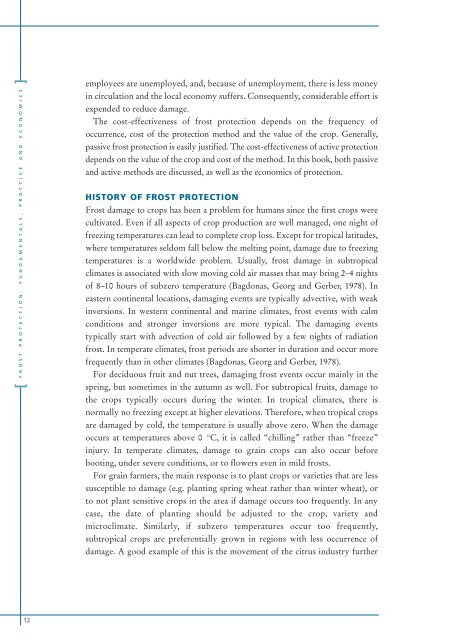
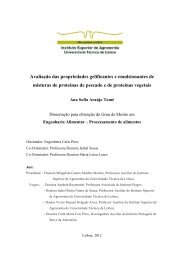
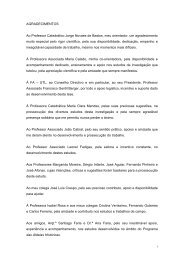
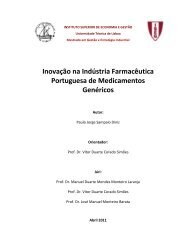
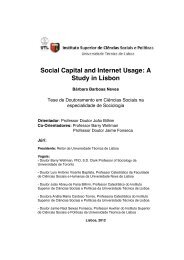
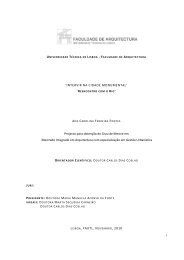
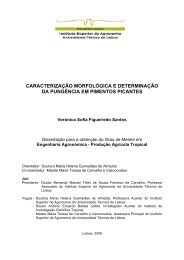

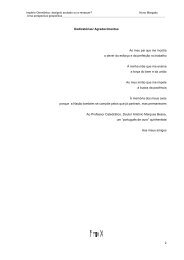
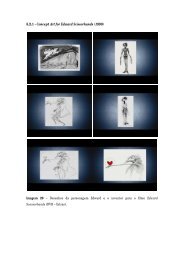
![Tese - Es..[1].pdf - UTL Repository - Universidade Técnica de Lisboa](https://img.yumpu.com/25707135/1/184x260/tese-es1pdf-utl-repository-universidade-taccnica-de-lisboa.jpg?quality=85)


